Last-Minute NYC Holiday Gift Guide 🎁
We’ve created a holiday gift guide with presents for the intrepid New Yorker that should arrive just in time—

The bridge is named for the once-dangerous channel it bridges, derived from the Dutch word hellegat, which means “hell channel.”

New York City’s Hell Gate Bridge sits on the north end of the East River, between Astoria, Queens, and Randall’s Island. The bridge is named for the once-dangerous channel it crosses, derived from the Dutch word hellegat, which means “hell channel.” Infrastructure aficionados marked the span’s centennial year with cake and events in 2017.
Hell Gate also happens to be a favorite of Dave Frieder, “the Bridge Man” and author of The Magnificent Bridges of New York City. Frieder has been documenting sights from atop the city’s bridges for over two decades. With his help and that of our Chief Experience Officer, Justin Rivers, we bring you ten fun facts and secrets about the Hell Gate Bridge. Want more? Join us for our upcoming Powering NYC: East River Ferry Tour, where you’ll learn more about Hell Gate’s “explosive” past and sail past multiple bridges, abandoned islands, waterfront power plants, and more!
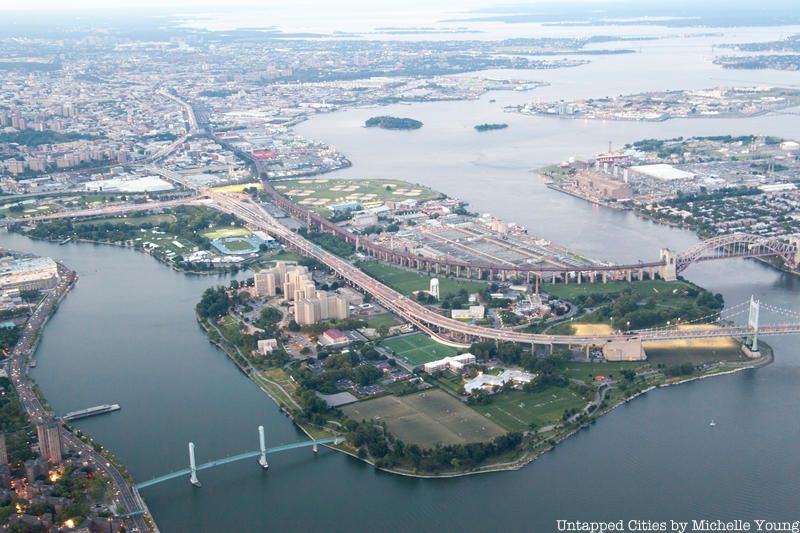
The Hell Gate Bridge is actually a complex of three bridges: the well-known Steel Arch, an inverted bowstring arch that spans a former water-filled channel (Little Hell Gate) between Wards and Randall’s Islands, and a small truss bridge, which would have been a double bascule-type bridge that goes over a small “Kill” between the Bronx and Randall’s Island.
In 2015, a pedestrian and bike route was opened beneath arches of the truss bridge, providing a pleasant and easy way to connect between the Port Morris in the Bronx and Randall’s Island. The bridge was the result of years of activism by groups like South Bronx Unite and others who have been advocating for healthier urban design for a community adversely affected by continued industrial waterfront conversion.
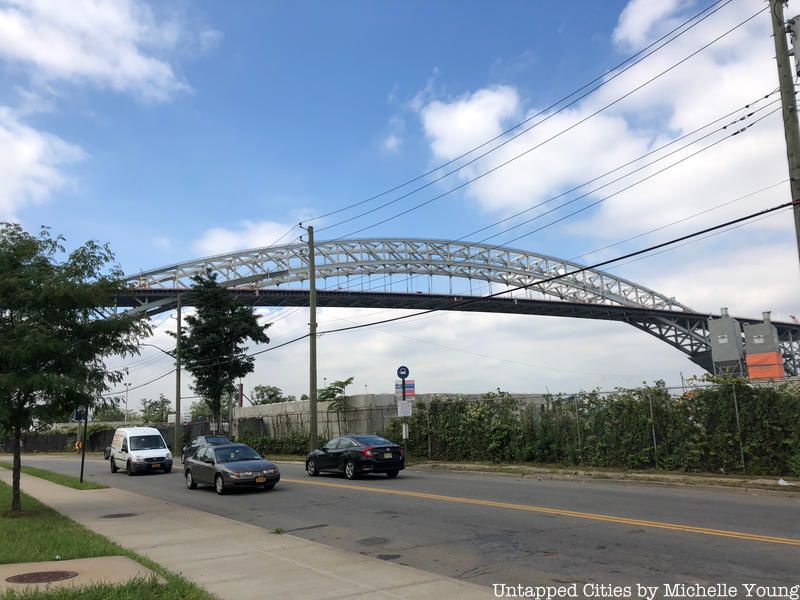
The Hell Gate Bridge was the longest steel arch bridge in the world when it was dedicated in March 1917. While it’s not the most recognized span in New York City, it did serve as the design inspiration for the Sydney Harbour Bridge in Australia, the Tyne Bridge in England, and the Bayonne Bridge, which connects Staten Island and New Jersey.
According to Dave Frieder, the Bayonne Bridge uses suspender ropes to support the roadway, while the Sydney Harbour and the Hell Gate use I-beams due to the extreme “live loads” (traffic) they carry. The Bayonne Bridge has also had a significant design change when the roadway was raised from 151 feet to 215 feet to accommodate larger freight ships coming into the ports of New York and New Jersey.
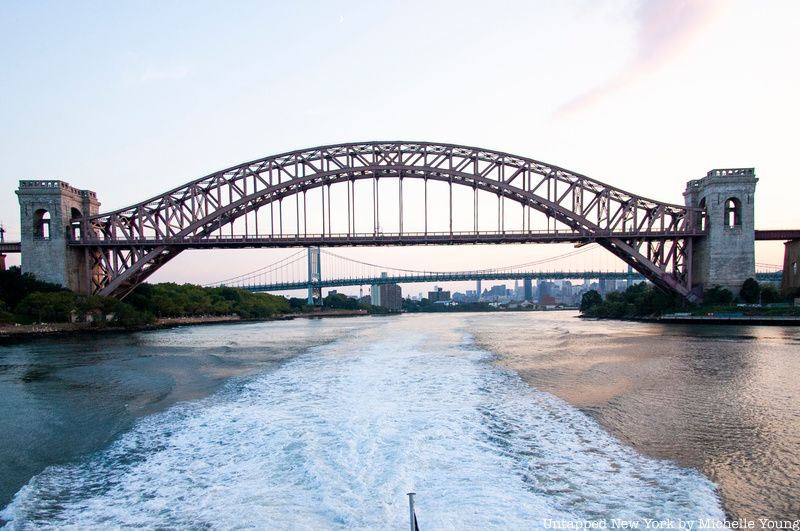
The Queens-side tower of the Hell Gate Bridge sits on solid bedrock, reaching only 15 to 38 feet below ground level. The Wards Island side was a completely different story because it lay near upturned rock strata that made the Hell Gate so treacherous to navigate by water. Also, a gas line that had run under the river prior to the bridge’s construction revealed a fissure in the bedrock which made creating a uniform bridge foundation nearly impossible.
Bridge engineer Gustav Lindenthal’s solution for the Wards Island tower was to utilize fifteen 18-foot diameter caissons to provide solid footing. It took sandhogs (excavation workers) several weeks to dig deep enough to find the reported fissure. It was much deeper than they had originally thought based on initial borings. The solution was one Lindenthal had already used closer to the surface. He used concrete to secure one of the caissons where the fissure passed through its center and, where the fissure lay at a connection point of two other caissons, he bridged the gap with a concrete cantilever. It was the first time this practice was employed in bridge building. In comparison to the Queens tower, the Wards Island tower caissons reach down anywhere from 94 to 123 feet.
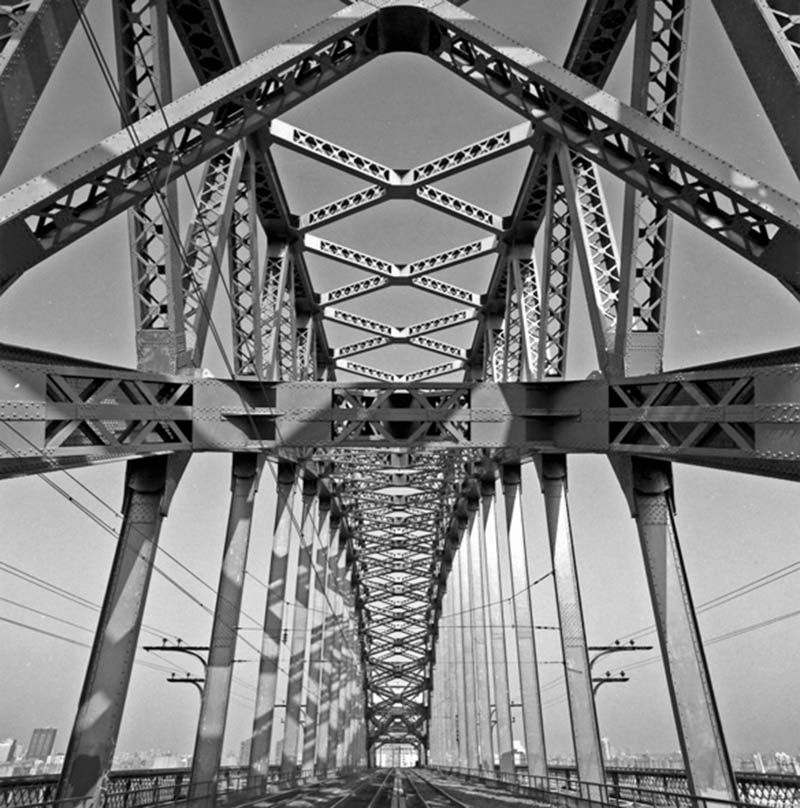
The Hell Gate’s “live load” capacity is 24,000-pounds per foot (that is 12 tons per foot), one of the most extreme load capacities for a bridge. In fact, Lindenthal designed the bridge so that sixty 200-ton locomotives could be placed end to end and the structure would easily take the weight.
Yet throughout the bridge’s history, it has never come close to testing that capacity. According to Sharon Reier’s book The Bridges of New York City, on the very day the Hell Gate Bridge opened in April 1917 the future of private rail in the United States was being called into question. A mere two days later the United States declared war on Germany and a year later all rail was nationalized for the war effort. The Pennsylvania Railroad would have a hard time bouncing back from this over the next fifty years. At its height, the PRR ran about 65 trains daily over the bridge. That number plummeted to four after the failure of Penn Central in 1970. Currently, Amtrak runs approximately 40 trains over the bridge.
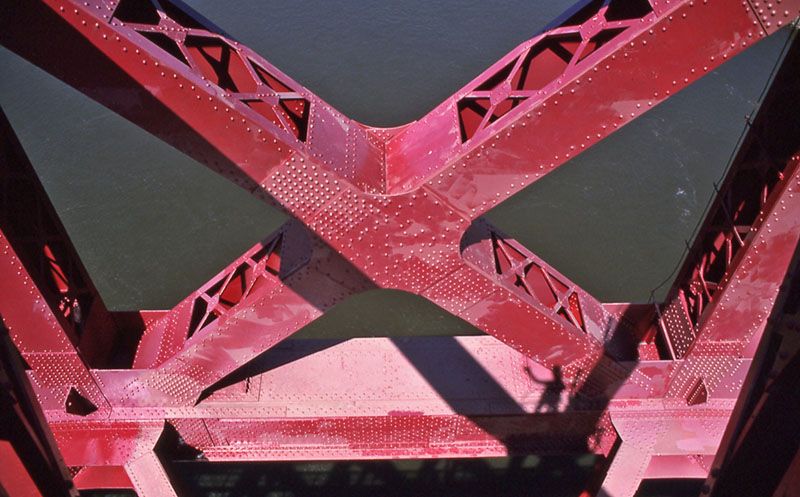
The “grip” of a bridge rivet (or mechanical fastener) is the thickness of the steel it holds together. The rivets of the Hell Gate Bridge happen to have the longest grip of any bridge in New York City: over nine inches. Due to the high carbon steel it is constructed out of, the span could last well over a thousand years.
Unfortunately that 1000 year guarantee does not include the paint job. By the early 1990’s the steel’s coating was in rough shape. With the urging of Senator Daniel Patrick Moynihan, the US Congress allocated $55 million to re-paint the bridge for the first time since it was built. The color chosen was a deep red called “Hell Gate Red.” But there was a problem, the clear urethane top coating wasn’t formulated to withstand UV bombardment from the sun. This, in turn, faded the red undercoating which was already fading before the paint job was finished. Amtrak chose to use the same paint in the late 1990’s to patch up the damage but it too began to fade. The bridge has undergone multiple paint jobs since.
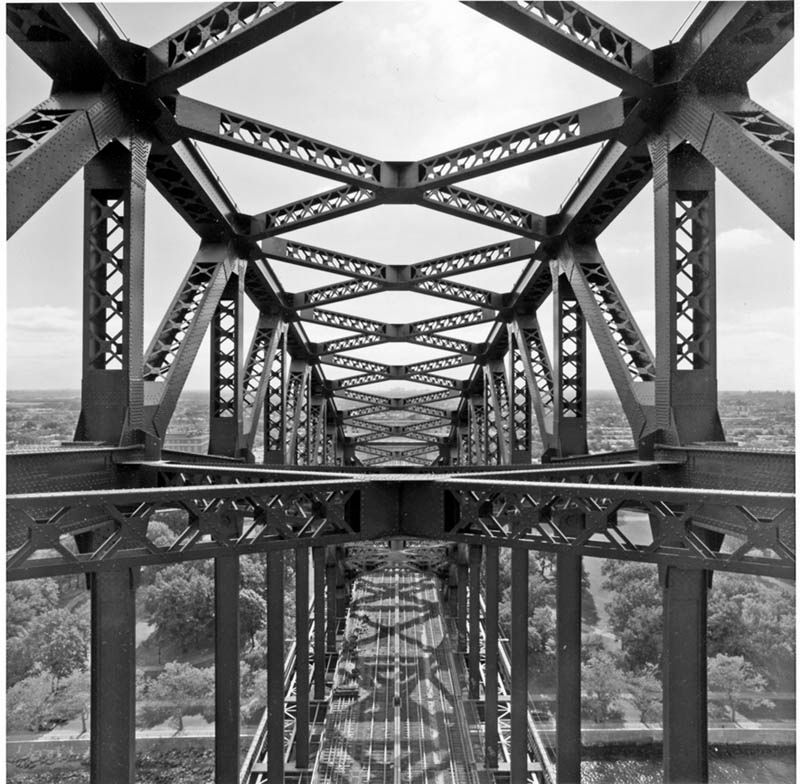
In 2000, one of bridge’s four tracks was removed because it was not being used. Amtrak thought about installing a roadway for service vehicles, but that idea never came to fruition. When the bridge was originally constructed, Lindenthal wanted to put in two pedestrian walkways on each side of the span for maintenance, but the idea was scrapped due to budget issues.
Today, two tracks are reserved for Amtrak trains, while the other one is for CSX Freight trains. When you take Amtrak to and from Boston, you will see the Hell Gate Bridge up close when it crosses over the span.
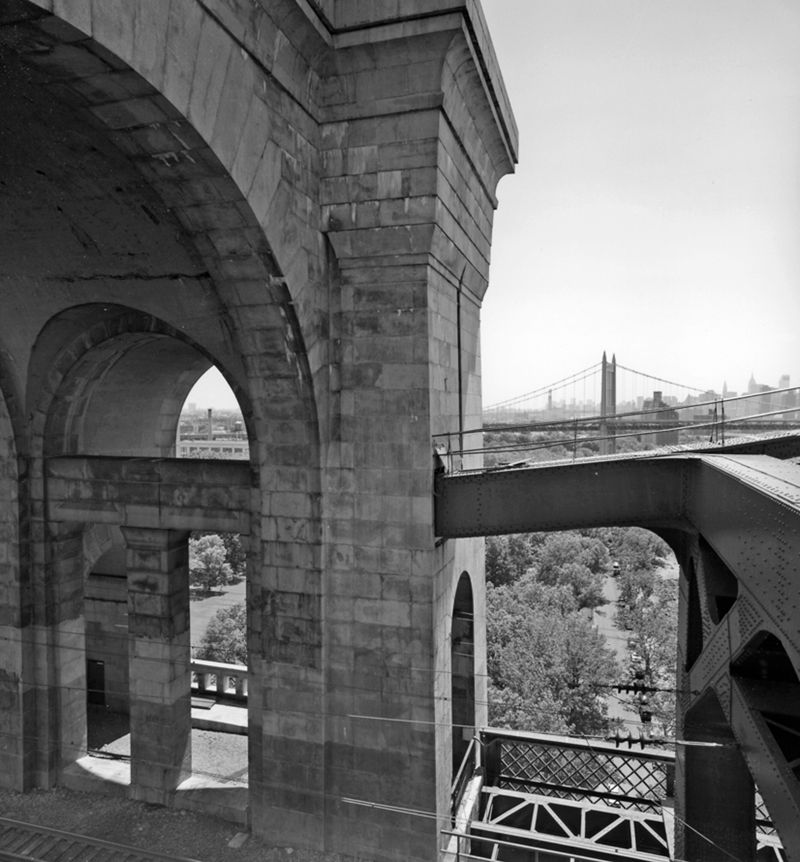
The Hell Gate was almost built as a crescent-arched bridge, but Gustav Lindenthal felt a spandrel arch would make the structure appear stronger. In this design, the upper chord or arch reverses its curve as it comes close to the towers.
Gustav Lindenthal had two very well known engineers assist him with the bridge’s construction: Othmar Ammann, who designed the George Washington, Verrazano, Throgs Neck, Bronx-Whitestone, Triborough and Bayonne Bridges, and David Steinman, who is known for building the Henry Hudson, the Marine Parkway, and the mighty Mackinac Bridge between the north and south peninsulas of Michigan.
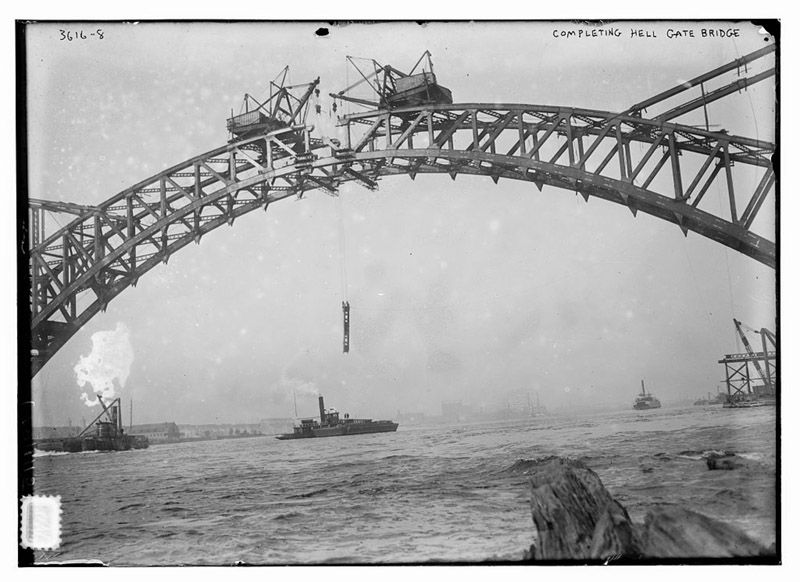
When it came time to close the arch of the bridge during construction, there was a 5/16th of an inch gap at the apex. Lindenthal employed 3000 ton hydraulic jacks, considered to be the most powerful in existence, to close it. Several massive gusset plate-breaking girders were also used to secure the two sections of the arch permanently, at a staggering 280 feet above the water. The two-hinged arch actually appears to be hingeless because the design called for the hinges to be obscured by steel housing nestled close to pylons.
The hinge design was essential so that the pylons could take on some of the thrust of the chords and not send it into the ground as in other hingeless bridge designs. Even though it appears that both the upper and lower chords are exerting the thrust, in reality, it is only the lower chord.
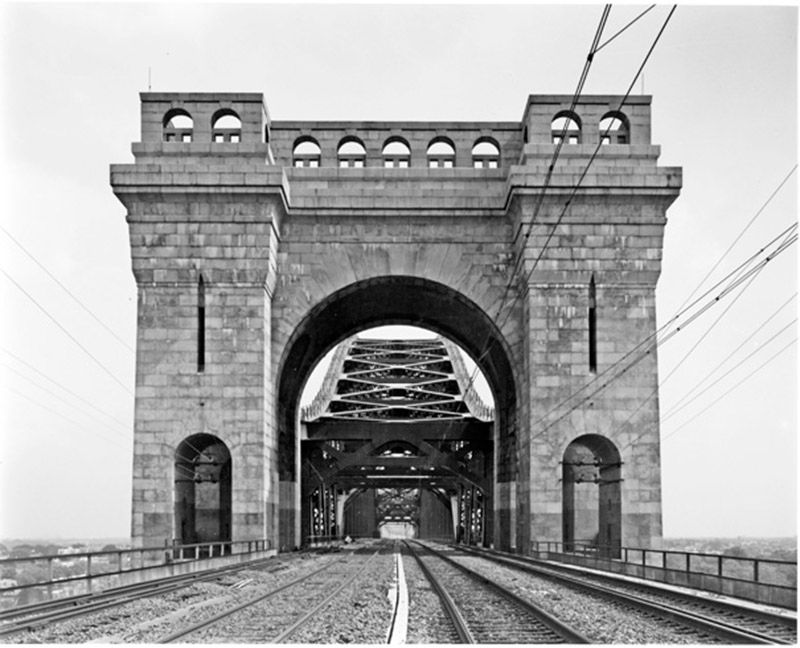
Dave Frieder tells us that the stone towers of the bridge, which sit above the road deck, serve no real structural function. They’re purely decorative. Early tower renderings by Henry Hornbostel (who worked with Lindenthal on the Queensboro Bridge) showed lavish Beaux-arts towers with separated arch abutments above the roadway. Those were scaled down to the connected arched towers we have today. In a New York Times article, Allan Renz, the grandson of Gustav Lindenthal, reveals that his grandfather “wanted the bridge to look a particular way” and that “the [stone towers] made it look right.” Yet even the chain of masonry arches that lead to the span and are structurally functional were celebrated for their beauty. According to The Bridges of New York City, one journalist wrote that the piers were almost unmistakably Egyptian and they felt as if “you are standing in the portico of a mammoth unfinished temple.”
In 2015, urban exploration photographer, formerly known as @hakimms shared with us his photographs from atop and inside the Hell Gate Bridge, including inside the stone towers.
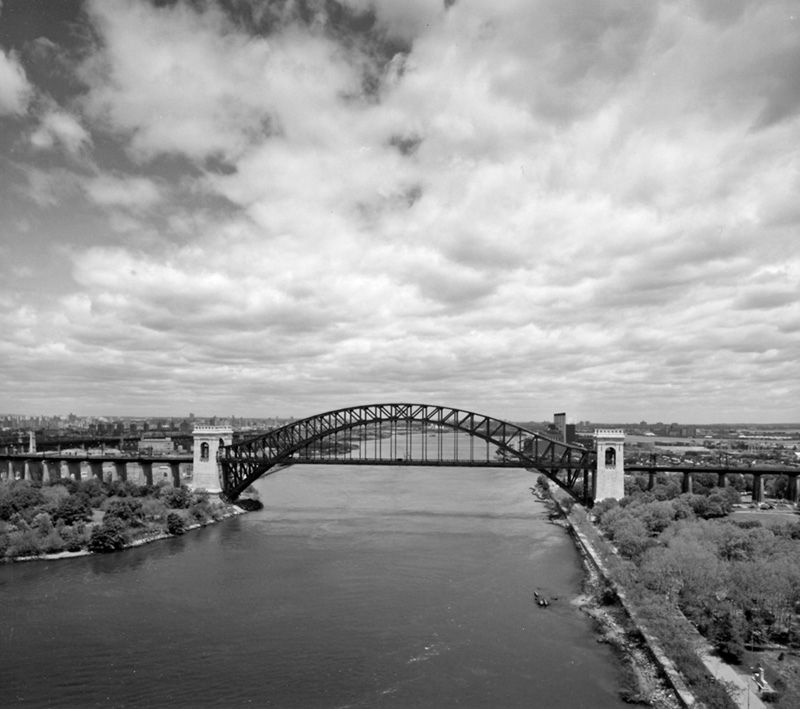
When it was completed in 1917, the Hell Gate Bridge was part of the New York Connecting Railroad and Pennsylvania Railroad. The PRR, which entirely funded the project, originally owned the bridge. Now, it’s owned and maintained by Amtrak.
Next, check out some urban exploration photos atop the Hell Gate Bridge.
Subscribe to our newsletter